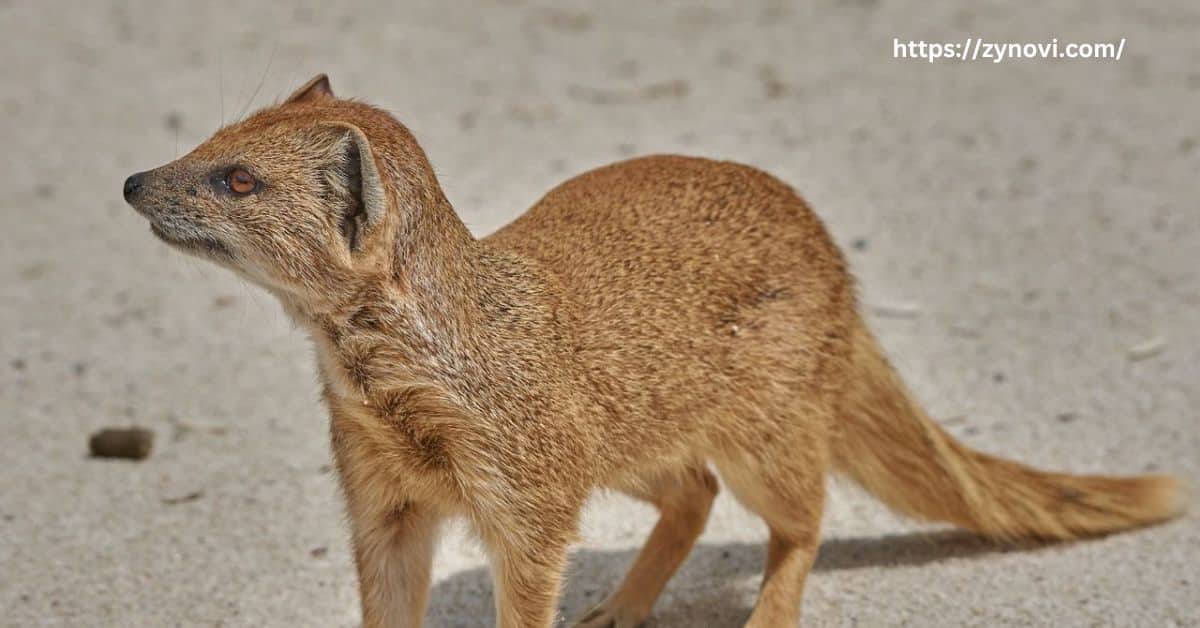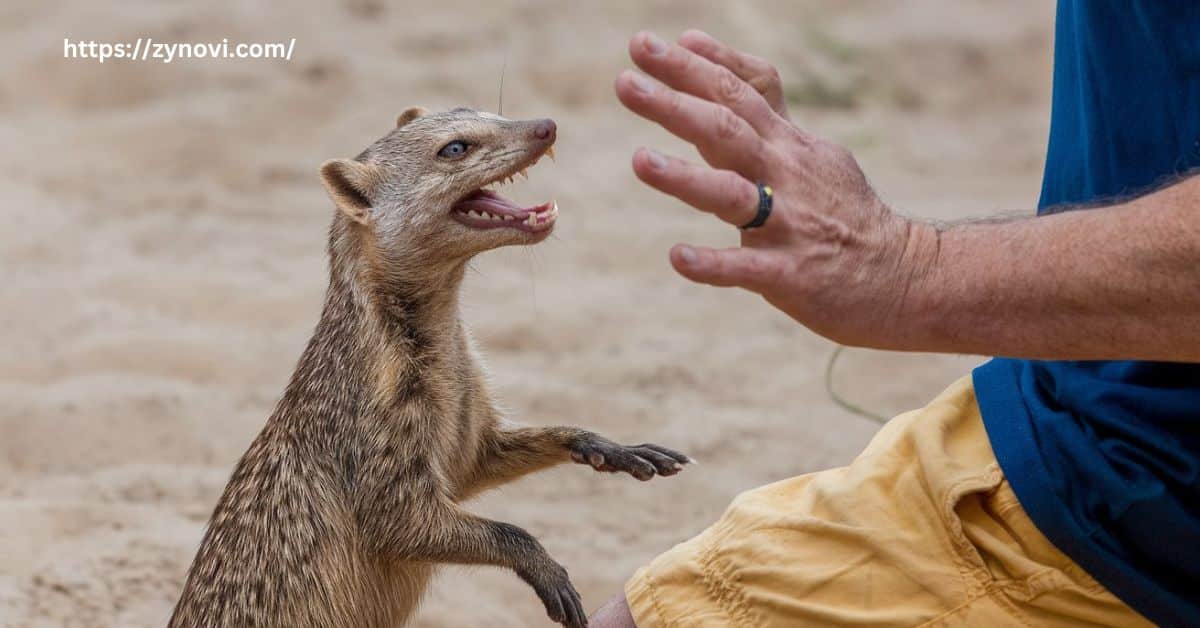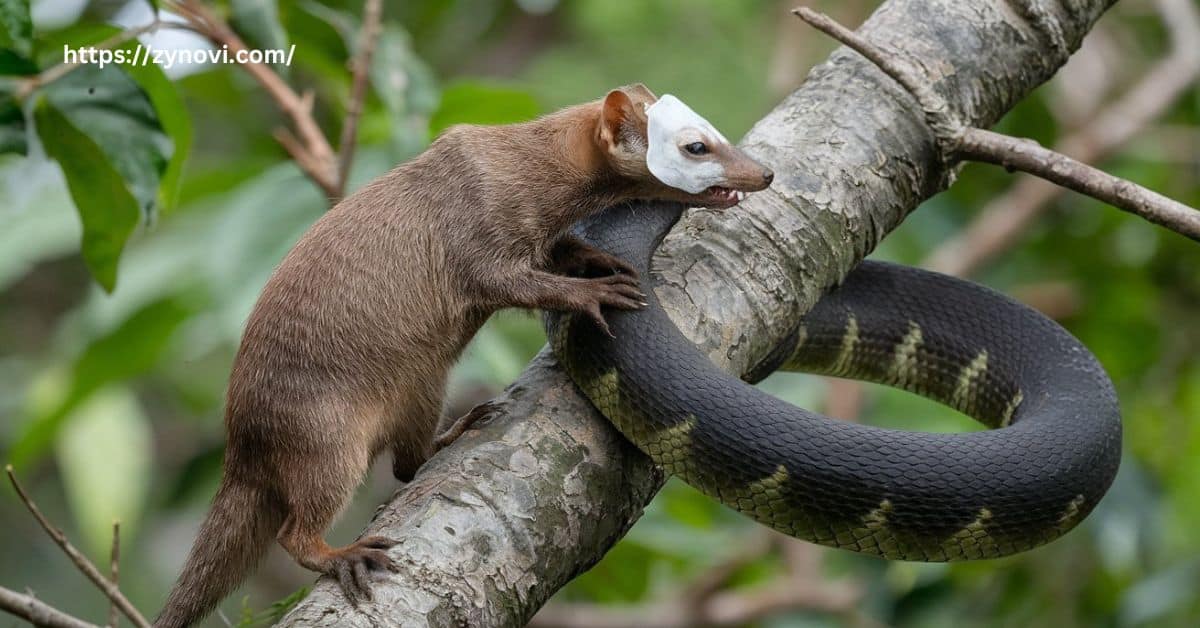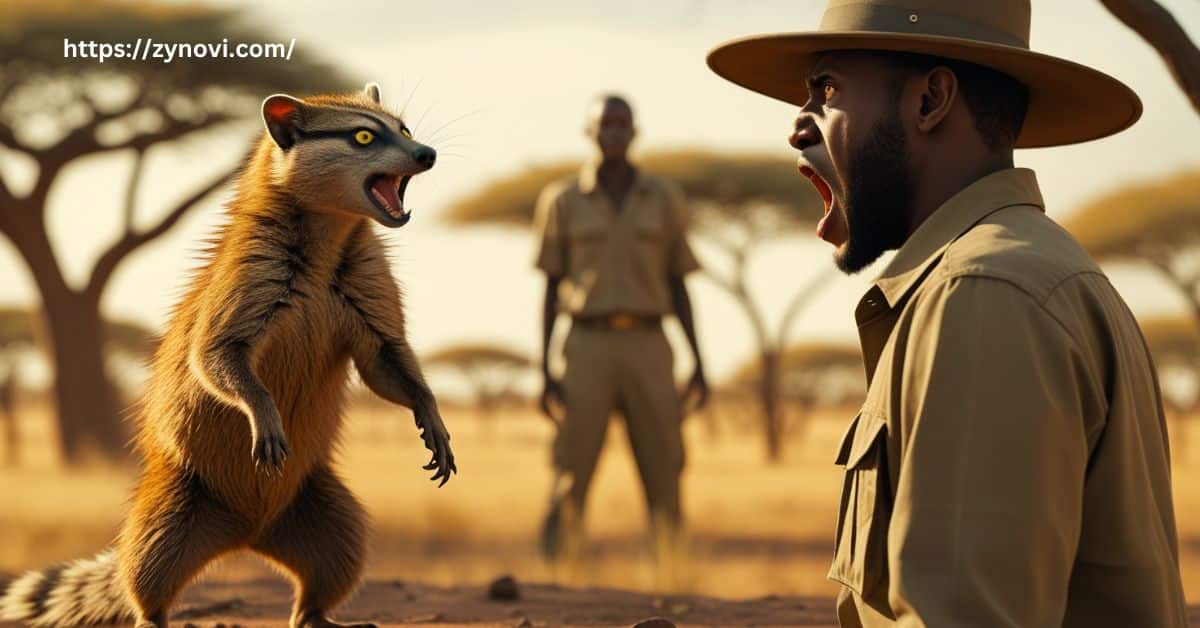Do Mongooses Attack Humans? Mongooses do not attack humans unless provoked or threatened, especially if they feel their young are in danger.
If you’ve ever spotted a mongoose darting across your path, you might have wondered whether these curious creatures pose a danger to humans. While mongooses are known for their fearless nature, especially when it comes to tackling venomous snakes, most people aren’t aware of how they interact with us.
In this article, we’ll jump into the behavior of mongooses, uncovering whether they actually attack humans and what you can do to stay safe. Whether you’re a nature enthusiast or just curious, you’ll learn the essential safety tips for avoiding unexpected encounters with these fascinating creatures. Keep reading!
What are Mongooses?
Mongooses are small carnivorous mammals with over 30 species, including the Indian gray mongoose, dwarf mongoose, and banded mongoose.
Mongooses are fascinating creatures known for their agility, fearless hunting skills, and role in controlling venomous snake populations. Despite their small size, these carnivorous mammals have a reputation for being formidable hunters.
These animals are easily recognizable by their sleek, elongated bodies, short legs, and bushy tails. Their physical characteristics make them agile and well-suited for hunting in various terrains.
Physical Attributes
Here’s the paragraph rewritten in table form:
| Aspect | Details |
|---|---|
| Hunting Venomous Snakes | Mongooses are renowned for hunting snakes, including cobras, due to their quick reflexes and resistance to certain snake venoms. |
| Pest Control | In both rural and urban areas, mongooses play a vital role in controlling rodent and insect populations. |
| Social Behavior | Species like the Indian gray mongoose are solitary, while others, such as the banded mongoose, exhibit cooperative family group dynamics. |
Where Are Mongooses Found?
Mongooses thrive in a wide range of habitats, including savannas, grasslands, tropical forests, and even urban areas, showcasing their adaptability.
These small carnivorous mammals are native to Africa and Asia but have also been introduced to Hawaii and the Caribbean, primarily to control pests.
However, their introduction has not always been beneficial; in some regions, mongooses have become invasive species, negatively impacting native ecosystems and biodiversity.
Are Mongooses Aggressive Towards Humans?

General Behavior of Mongooses
Mongooses are typically non-aggressive toward humans and prefer to steer clear of direct interaction. Naturally shy and elusive, they are more likely to retreat than confront.
However, their well-known fearlessness and defensive instincts can make them appear bold in certain scenarios, especially when they feel threatened or are protecting their young.
This unique combination of caution and bravery is a defining trait of mongoose behavior, showcasing their adaptability in the wild.
Circumstances That May Trigger Aggression
While rare, mongoose aggression toward humans can occur under specific conditions:
- Defensive responses: A mongoose may attack if it feels cornered or threatened, especially when protecting its offspring.
- Food competition: Mongooses are opportunistic feeders. Human activities like leaving food scraps in garbage cans, compost bins, or near outdoor grills can attract them.
- Health-related issues: Diseased mongooses, particularly those infected with rabies, may act erratically and aggressively.
Did you know? A mongoose’s ability to resist certain snake venoms doesn’t extend to all species, making them cautious but effective hunters.
Reasons Why Mongooses Might Attack Humans
Defensive Behavior
Mongooses are known for their strong maternal instincts, and they will aggressively defend their offspring when they perceive a threat. This protective nature extends to their general behavior; if a mongoose feels cornered or trapped, it may resort to biting or scratching as a defensive measure.
Additionally, attempts to handle wild mongooses often provoke such responses, highlighting their natural wariness and instinct to protect themselves and their family from perceived harm.
Misunderstandings in Urban and Rural Areas
In regions where mongooses and humans share space, misunderstandings can sometimes lead to unnecessary conflict. These interactions often stem from the following situations:
- Sudden encounters in sheds, garages, or barns: Mongooses often seek shelter in these areas, leading to surprise encounters that may alarm humans or provoke the mongoose into a defensive reaction.
- Accidental disturbance of their nests: When people unknowingly disturb a mongoose’s nesting site, it may trigger aggressive behavior as the animal attempts to protect its territory or young.
Diseases as Triggers
Rabid mongooses represent a significant health risk, as rabies can drastically alter their typical behavior. A mongoose infected with this deadly virus may display uncharacteristic aggression, confusion, or a loss of coordination.
These symptoms make them more prone to approaching or attacking humans and animals, as their natural wariness diminishes.
This behavioral change underscores the importance of staying cautious around wildlife and seeking immediate medical attention if bitten or scratched by a mongoose.
How to Safe From Mongoose Encounters

Do Mongooses Attack Humans? To stay safe from mongoose encounters, keep a safe distance and avoid provoking them. Secure food sources, clear clutter, and ensure pets are supervised and vaccinated to minimize risks.
Precautionary Measures in Mongoose-Prone Areas
- Secure food sources: Always store garbage in tightly sealed containers, and avoid leaving food scraps or pet food outside, as these can attract mongooses to your property.
- Clear yard clutter: Remove potential nesting sites by keeping firewood stacks organized, trimming overgrown vegetation, and clearing debris that might serve as a shelter for mongooses.
- Safeguard pets: Ensure your pets are up-to-date on vaccinations, particularly rabies, and closely supervise them when they’re in areas where mongooses are active to prevent confrontations.
What to Do If You Encounter a Mongoose
What to Do If You Encounter a Mongoose
- Stay calm: Keep your composure and avoid sudden movements, as quick actions could startle the mongoose and provoke an aggressive response.
- Give space: Slowly back away from the animal, maintaining a safe distance to allow the mongoose to retreat peacefully without feeling threatened.
- Do not feed: Feeding wild mongooses encourages dependence on humans for food, potentially leading to aggressive behavior and altering their natural instincts, which can be dangerous for both you and the animal.
Do Mongooses Pose Health Risks?
Mongooses can carry several diseases that pose risks to humans and pets, particularly in areas with high mongoose populations.
Common Diseases in Mongooses
| Disease | Transmission | Symptoms in Humans | Prevention |
|---|---|---|---|
| Rabies | Bites or scratches | Fever, confusion, paralysis | Vaccination, wound cleaning |
| Leptospirosis | Contact with infected urine or water | Flu-like symptoms, kidney damage | Avoid contaminated water, hygiene |
| Parasites (fleas, ticks) | Physical contact or shared spaces | Skin irritation, disease spread | Pest control, pet protection |
Preventive Measures
- Seek medical attention immediately for bites or scratches: If bitten or scratched by a mongoose, it’s crucial to seek medical care as soon as possible to prevent potential disease transmission, such as rabies or leptospirosis.
- Ensure pets are vaccinated against rabies and treated for parasites: Keep your pets’ vaccinations, especially for rabies, up to date, and make sure they are regularly treated for fleas, ticks, and other parasites that can be transmitted by mongooses.
- Avoid direct contact with wild mongooses, especially those exhibiting unusual behavior: If you encounter a mongoose that appears disoriented, aggressive, or sick, avoid direct interaction, as these signs could indicate disease and increase the risk of transmission.
Amazing Facts About Mongooses

- Snake hunters extraordinaire: Mongooses have specialized acetylcholine receptors that make them resistant to certain snake venoms, allowing them to take on dangerous snakes like cobras and vipers with remarkable skill.
- Team players: Some species, such as the banded mongoose, live in cooperative groups where they work together to hunt, protect their territory, and care for their young, showcasing their strong social bonds.
- Adaptable eaters: Although mongooses are primarily carnivorous, feeding on small mammals, insects, and reptiles, they will also consume fruits and other plant matter when available, making them opportunistic feeders.
Quote: “The mongoose, fearless yet calculated, teaches us the balance of courage and caution.”
Are Mongooses a Real Threat to Humans?
While mongooses are not inherently dangerous, certain factors can make them a potential threat:
Rabies transmission: Mongooses can carry and transmit rabies, which poses a serious health risk if they bite or scratch humans. Rabies-infected mongooses may display unusual aggression or confusion, increasing the risk of attack.
Defensive aggression: While mongooses are generally non-aggressive, they may become defensive if they feel threatened, cornered, or if their young are in danger. This can lead to biting or scratching as a form of self-defense.
Overall, their role as pest controllers and predators of venomous snakes outweighs the minimal risks they pose to humans.
Final Thoughts
Mongooses are fascinating creatures that play a vital role in their ecosystems, particularly in controlling pest populations. However, understanding their behavior, avoiding direct contact, and taking precautions can minimize risks associated with human-mongoose interactions.
While rare, the threat of rabies and defensive aggression highlights the importance of respecting wildlife and maintaining safe boundaries. By following these mongoose safety tips, you can coexist with these remarkable animals while protecting yourself and your community.
FAQs
Is mongoose friendly to humans?
Mongooses are generally shy and avoid humans, but they may become defensive if threatened or cornered.
How aggressive are mongooses?
Mongooses are not naturally aggressive but can show aggression if they feel provoked, threatened, or are protecting their young.
Why are cobras afraid of mongooses?
Cobras fear mongooses due to their incredible agility, quick reflexes, and resistance to venom, allowing them to hunt and fight venomous snakes effectively.
How do you scare away mongooses?
To scare away mongooses, make loud noises, or use bright lights; avoid approaching them and give them space to retreat.
Conclusion: Do Mongooses Attack Humans?
In conclusion, mongooses do not typically attack humans unless provoked or in defense of their young. While their bold and fearless nature might give the impression of aggression, they are generally shy creatures that prefer to avoid human interaction.
By understanding their behavior and taking simple precautions, such as securing food sources and avoiding direct contact, you can minimize the risk of an encounter. With this knowledge, you can confidently enjoy observing mongooses from a safe distance without fear of attack. Stay aware, and always respect their space!










